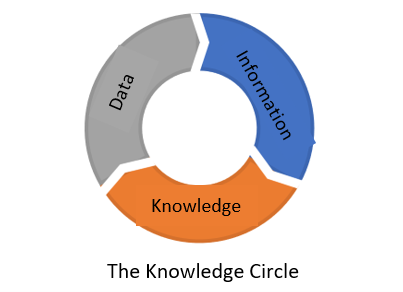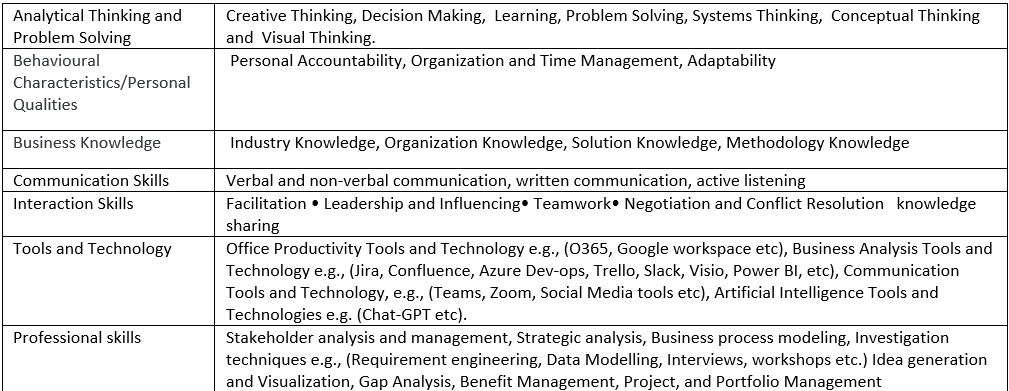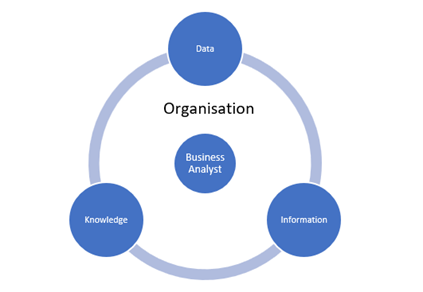
Information Science, Knowledge Management and the Business Analyst
In today’s fast changing world, information, and technology are changing the way organizations and nations operate. The quality of information available to an organization, its ease of use and systems of dissemination can make the difference between organizations that thrive and those that get left behind in the archives of history. To understand this better, let’s look at the science of information.
Information science is the discipline that deals with managing information, from creation to final archiving or destruction. It is concerned with the generation of data, the associated technologies, and the transformation of data into information and knowledge. What is information? Let’s begin by defining data.
Data
Data can be described as independent entities, , numbers, letters etc. that on their own do not convey any useful meaning. Consider the following data set: ‘A’, ‘John’, ‘boy’ ‘good’ ‘is’ ‘1’, ‘class’ ‘and’ ‘in’ ‘number’ ‘his’ . Each entity on its own does not really convey any useful meaning. However, when this data is put through a transformation process, with a pattern or structure, it conveys a meaning ‘John is a good boy and number 1 in his class – these entities which has been structured or patterned becomes information within the system.
Information
Information can therefore be described as data with a meaningful pattern to the system receiving it, such that it can change the state of the system. In other words when information is received by an individual, an organization or a system, it must be meaningful to that system: they have been transformed by this information. In some cases, the information received enables them to take an action or make a decision. This change in state might be from a current (as-is) state to a future (to-be) state, or just a change in position from point a to b, or from a less informed state to a more informed state.
Knowledge
Knowledge: When information has been fully understood, digested, and internalized by a system such that the system can reproduce it in various forms and disseminate it easily to others, it has become knowledge to that system. For example, an employee may build up their knowledge of a domain through multiple channels: training, conferences, water cooler conversations etc. and become an expert with a full understanding of the subject area. They can simplify it into various forms and train others: the information they have absorbed has become their knowledge.
This relationship between data, information and knowledge can be represented as shown below in a knowledge circle.

The importance of knowledge to an organization can never be overemphasized. Organizations can thrive or fail depending on the quality of knowledge that exists within them. Knowledge in organizations exists in two forms: explicit and tacit knowledge.
Explicit knowledge is the knowledge that exists in the public domain of an organization. It is in their culture, in their SharePoint systems, books, journals… It is documented and widely available to all.
Tacit knowledge is the knowledge that exists within individuals and SMEs, it is unwritten, can be heuristic, is veritable and often lost when such individuals are no longer with the organization.
Seeing the value of knowledge to the continued existence of organizations, how can businesses best elicit the knowledge within their domain? How can they ensure the quality of their information, and extract valuable tacit knowledge from SMEs? Answers to these questions lies in the domain of business analysis.
Advertisement
Business Analysts
Business Analysts are change agents who often sit between the business and technology arms of an organization. They help the communication between the business and technology, ensuring data from both sides is translated into meaningful information which both parties understand, ultimately causing a change in the state of the organization. Business Analysts help organizations move forward from a current state to a future state.
Business Analysts by nature of their training can elicit tacit knowledge from SMEs, document the knowledge and ensure organizations do not increase their technical debt when valuable employees leave. They are also well placed to investigate and scrutinize the volume of information accessible to an organization by verifying and validating it with SMEs before such information is used in business decisions, thus improving the quality of an organization’s information and knowledge.
Some of the Business Analysts’ skills include the following:


Concluding Remarks
The knowledge circle will continue to be at the heart of an organization’s growth. Organizations which harness their knowledge correctly will continue to outperform their counterparts, and Business Analysts who understand their role in this circle will continue to be great assets and instrumental to the success of their organizations.